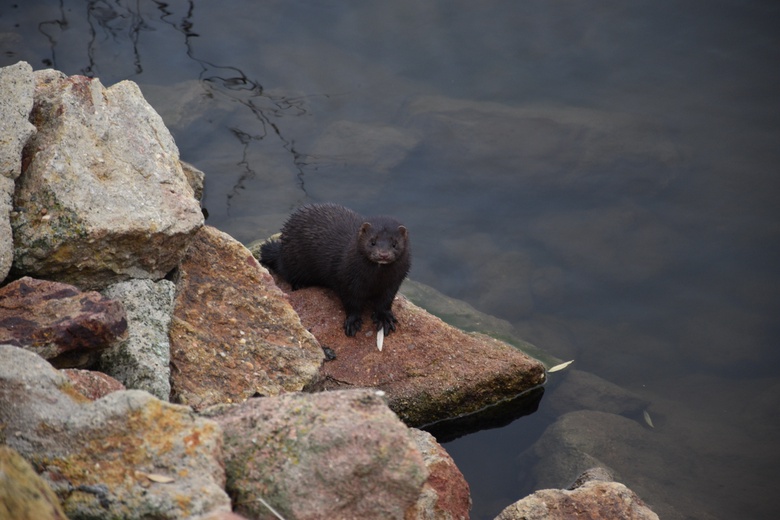Working in Patagonia is challenging as the distances covered are extensive and the weather can constrain our work in the field. Thus, designing our strategies to maximize our work’s impact is crucial to protect the endangered species with which we work. To reduce the mink’s impact on native fauna we work through different strategies. These include trapping areas with high mink density and in those places that are dispersal fronts; we work on early detection with sniffing dogs; and, specifically to protect the Hooded Grebe, we have established a Colony Guardian Program, which aims to avoid any depredation event on Hooded Grebe breeding colonies.
These control programs are designed and coordinated by AVES ARGENTINAS-CONICET and are carried out with the help of the Argentinian National Parks Administration, local and national state agencies, local businesses, and local communities committed to the preservation of their natural surroundings.
The Hooded Grebe (Podiceps gallardoi) is a critically endangered species, endemic to the Santa Cruz province in Austral Patagonia, Argentina. It was first described by science in 1974 and, in less than 25 years, its population numbers collapsed to under 20% of its original size. Today, fewer than 400 reproductive pairs remain. Each summer, Hooded Grebes breed on small lakes located on the high plateaux east of the southern Andes range, and each autumn it migrates east to overwinter at the Atlantic Ocean estuaries. Added to the species brittle status, its habitat - desert-like steppes - are the least protected biomes in Argentina, a problem not only for the Hooded Grebe, but for the entire biological community of this biome.
The major threats to the Hooded Grebe and this ecosystem are climate change - stronger winds, less precipitation, unstable temperature patterns; the expansion of invasive species (e.g., American mink, rainbow trout and kelp gull), changes in land use and the growth of urban settlements, mainly causing extraction activities (mining and petrochemical extraction, which increase the presence of open pit landfills amongst other problems). After 10 years of hard work, we managed to stabilize the Hooded Grebe’s population numbers and now we continue working to contain the threats, establish an ex-situ breeding protocol to increase the species’ yearly recruiting success, researching biological and ecological features key to the species long term survival and creating environmental education campaigns to increase the sense of belonging, and engaging the local communities to protect this unique species and its environment.
The Hooded Grebe Project, originally created as an alliance between Aves Argentinas and the local NGO Asociación Ambiente Sur, continues today with the support of the National Parks Administration, CONICET (the Argentinian National Scientific Research Council), and many other state agencies as well as several local businesses and larger private companies, all committed to the long-term protection of the Hooded Grebe.

